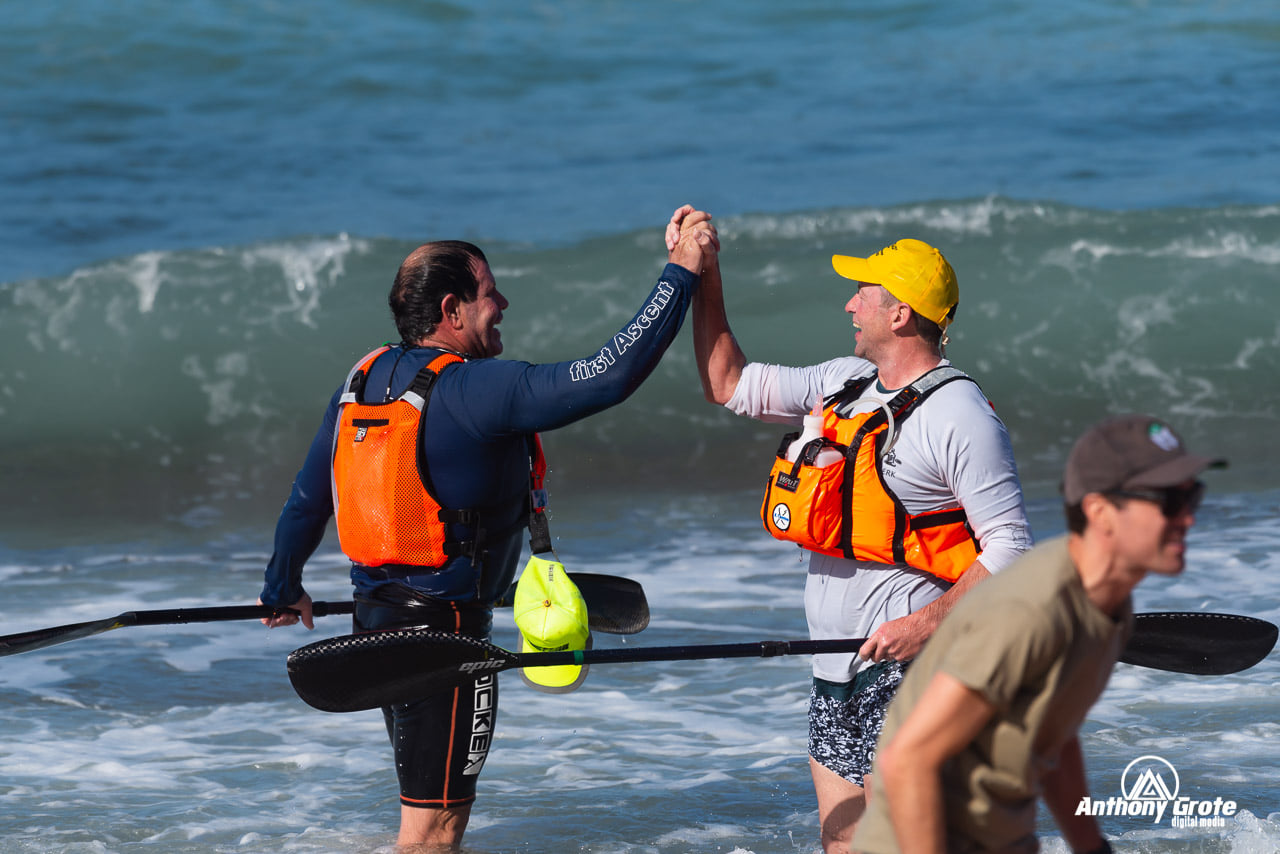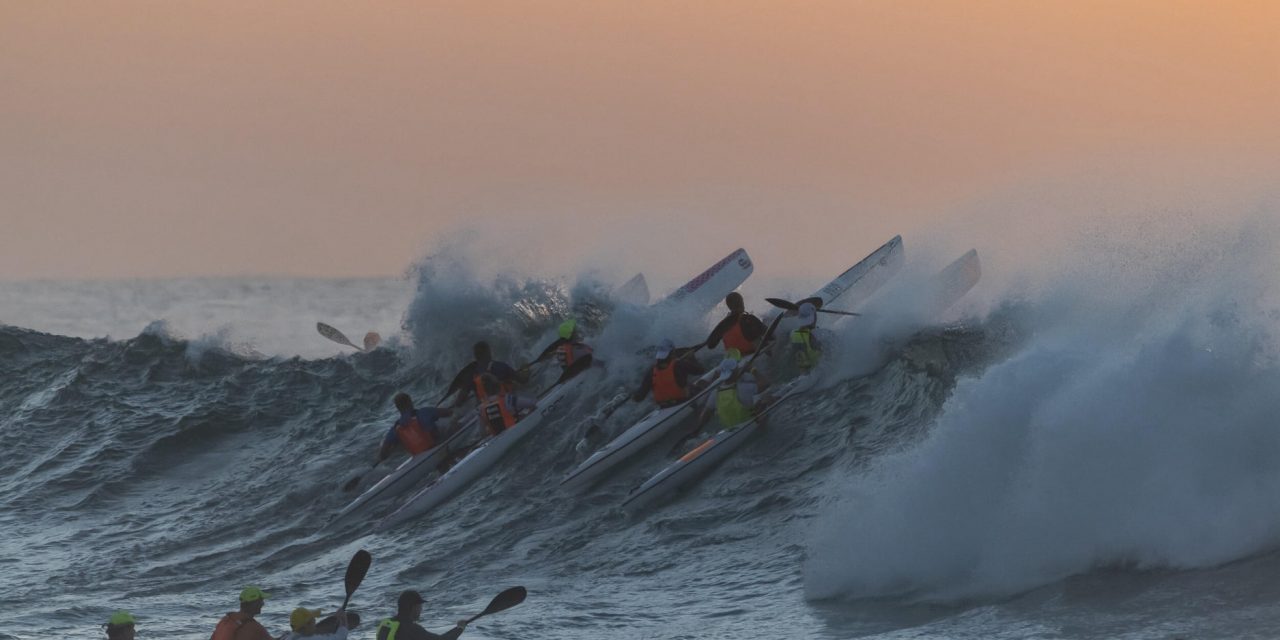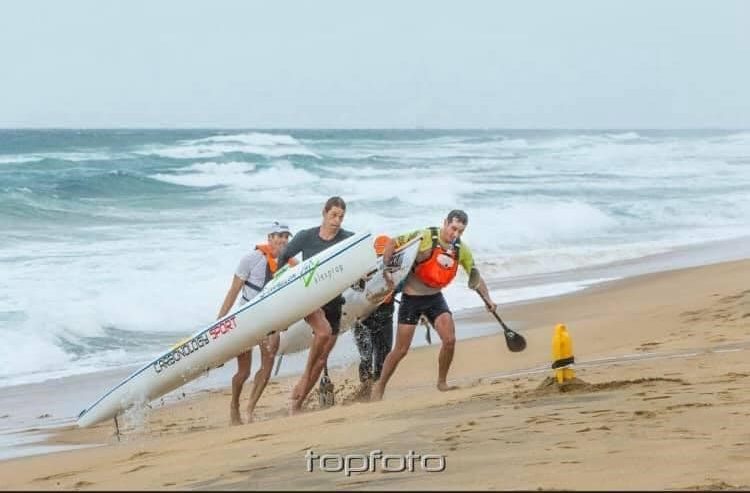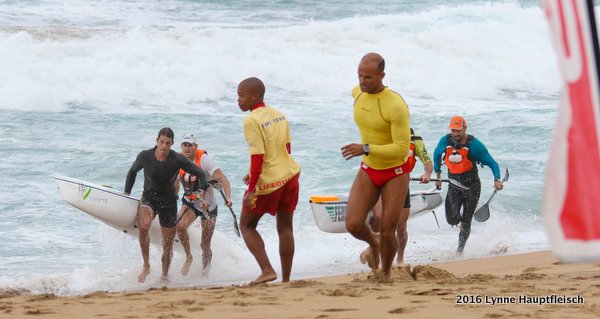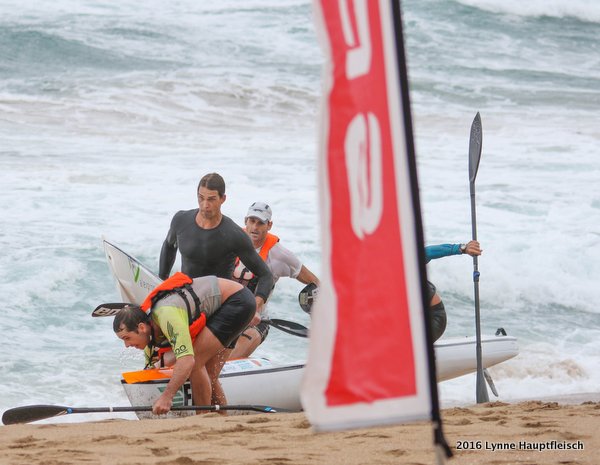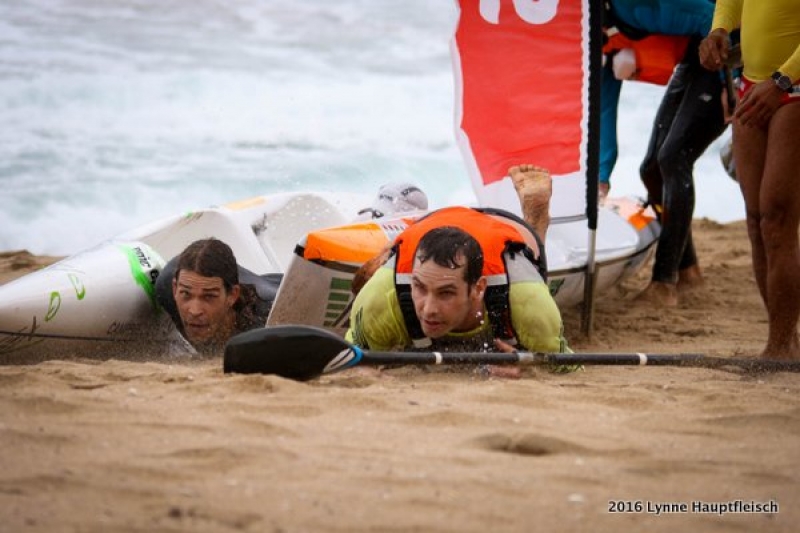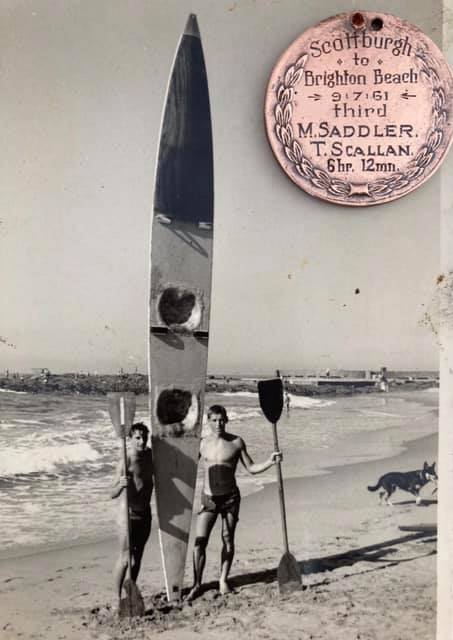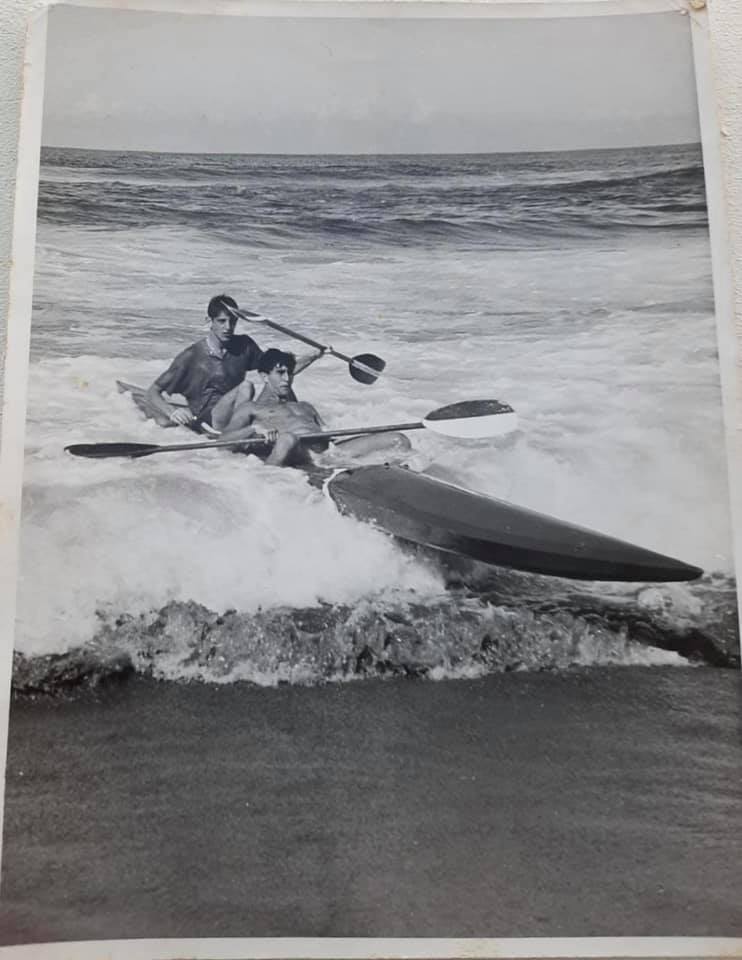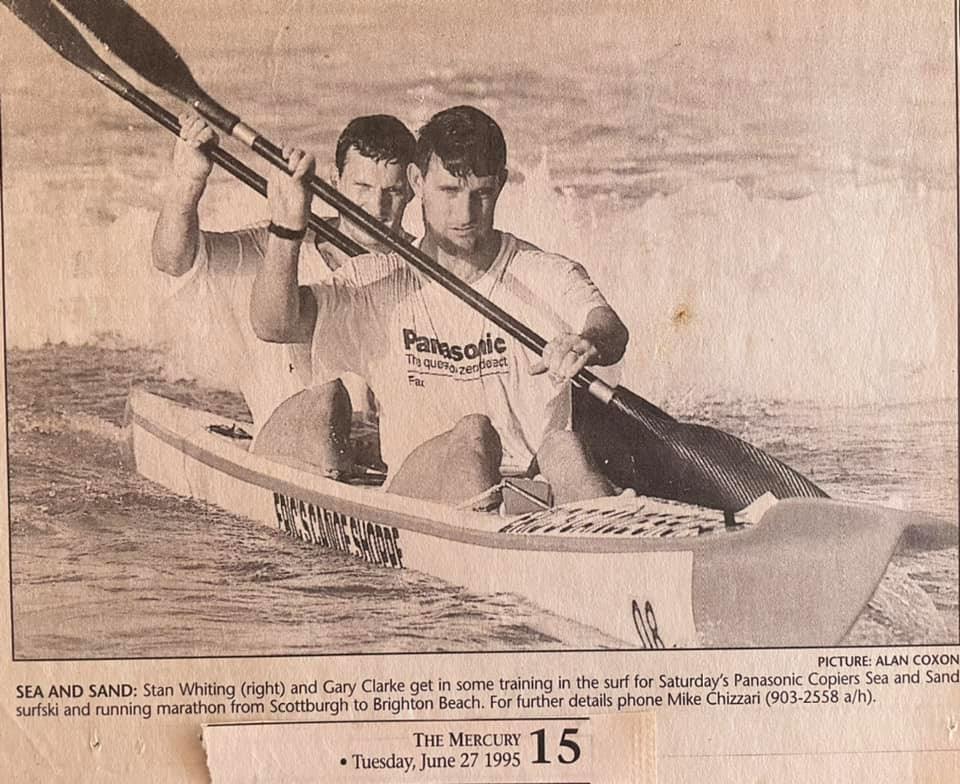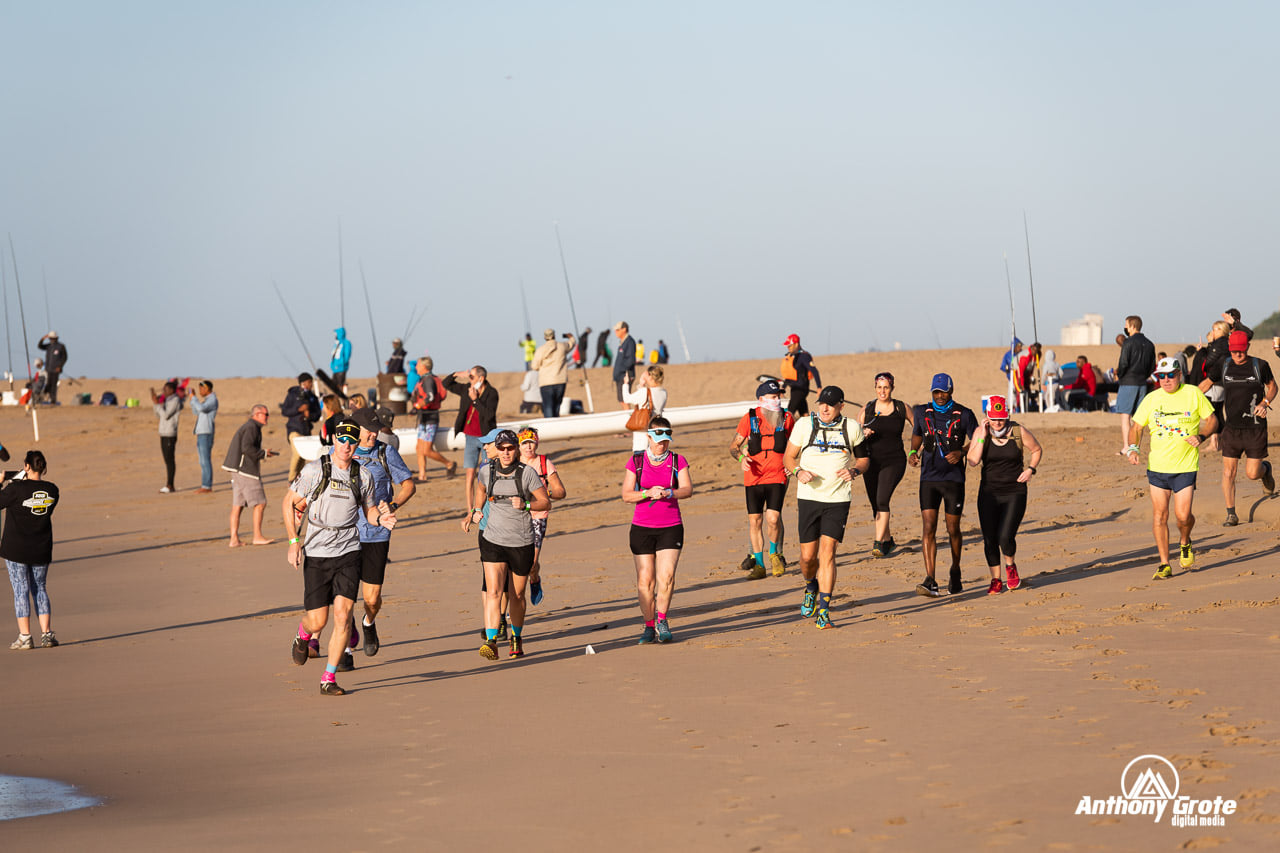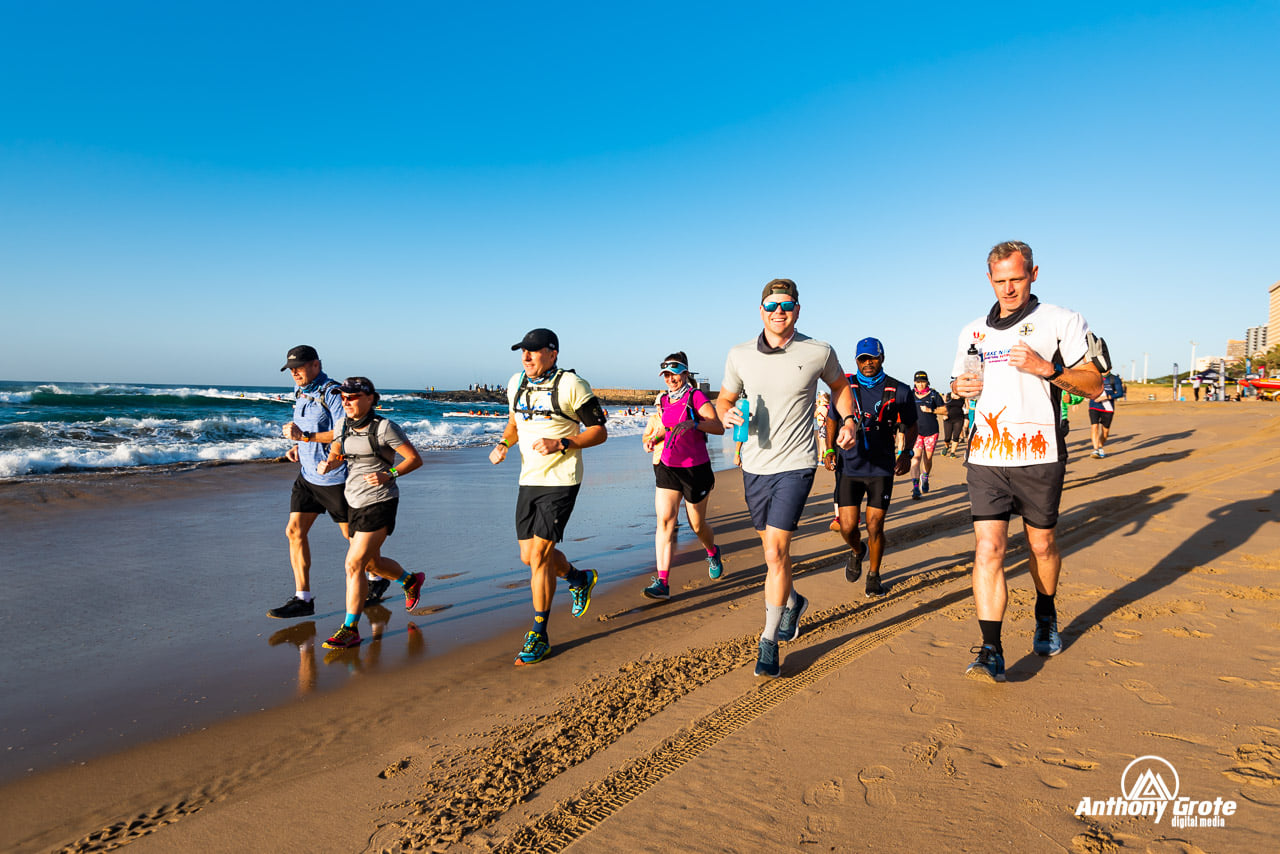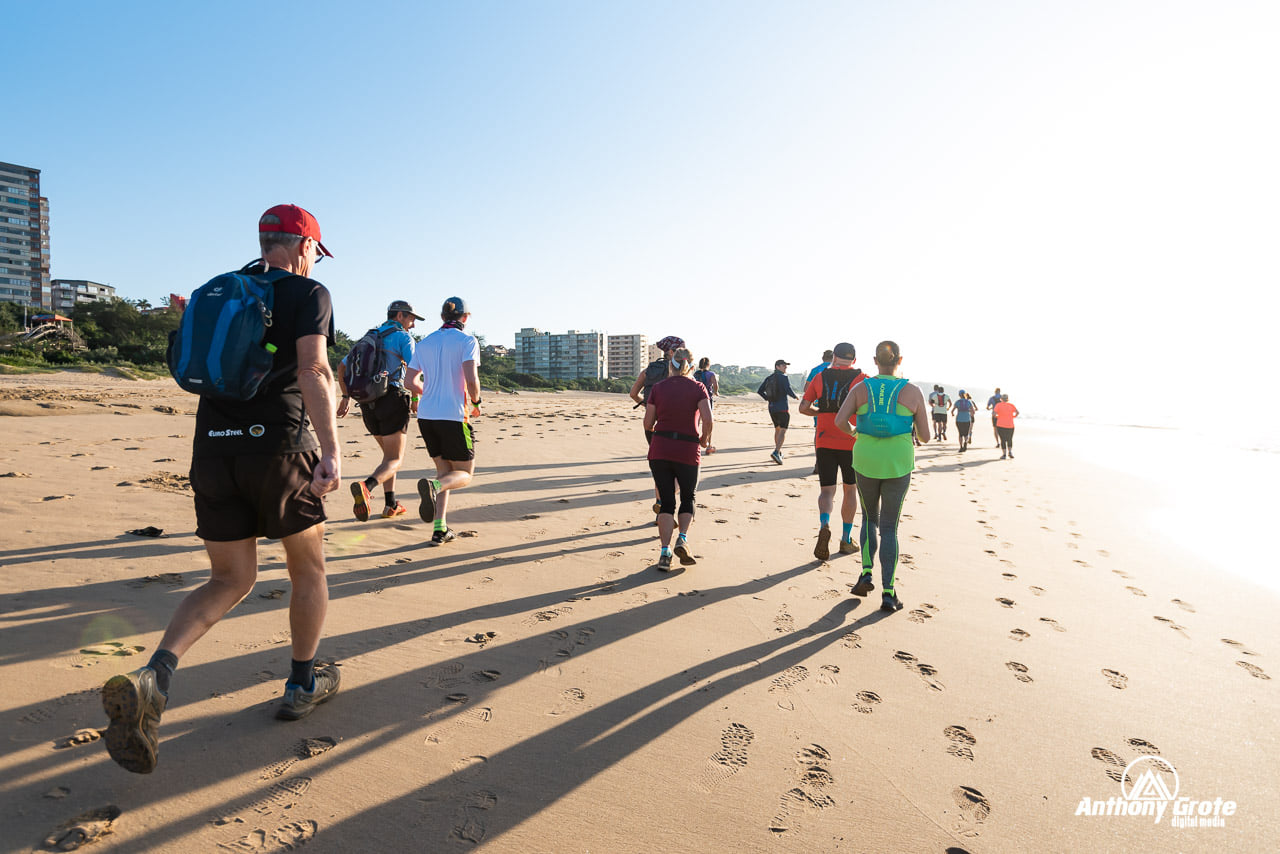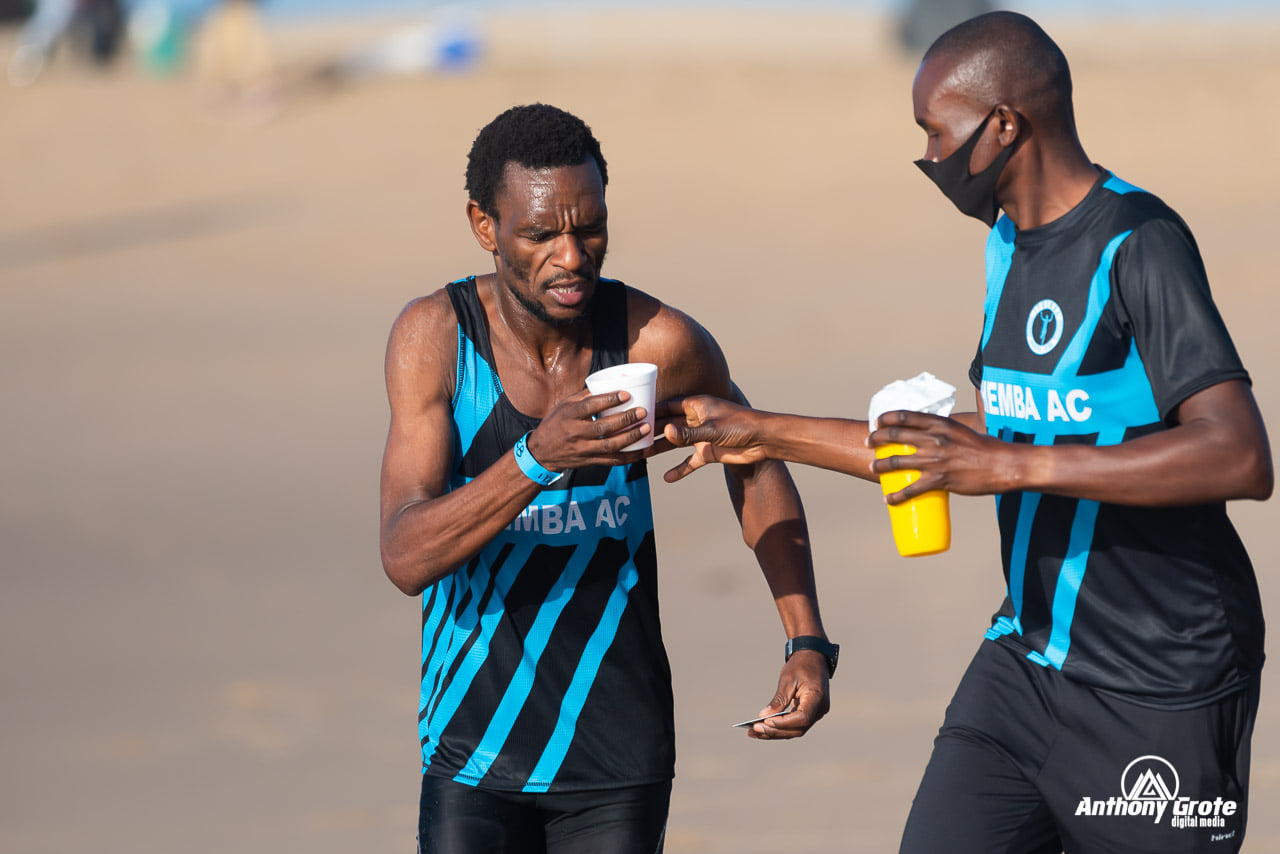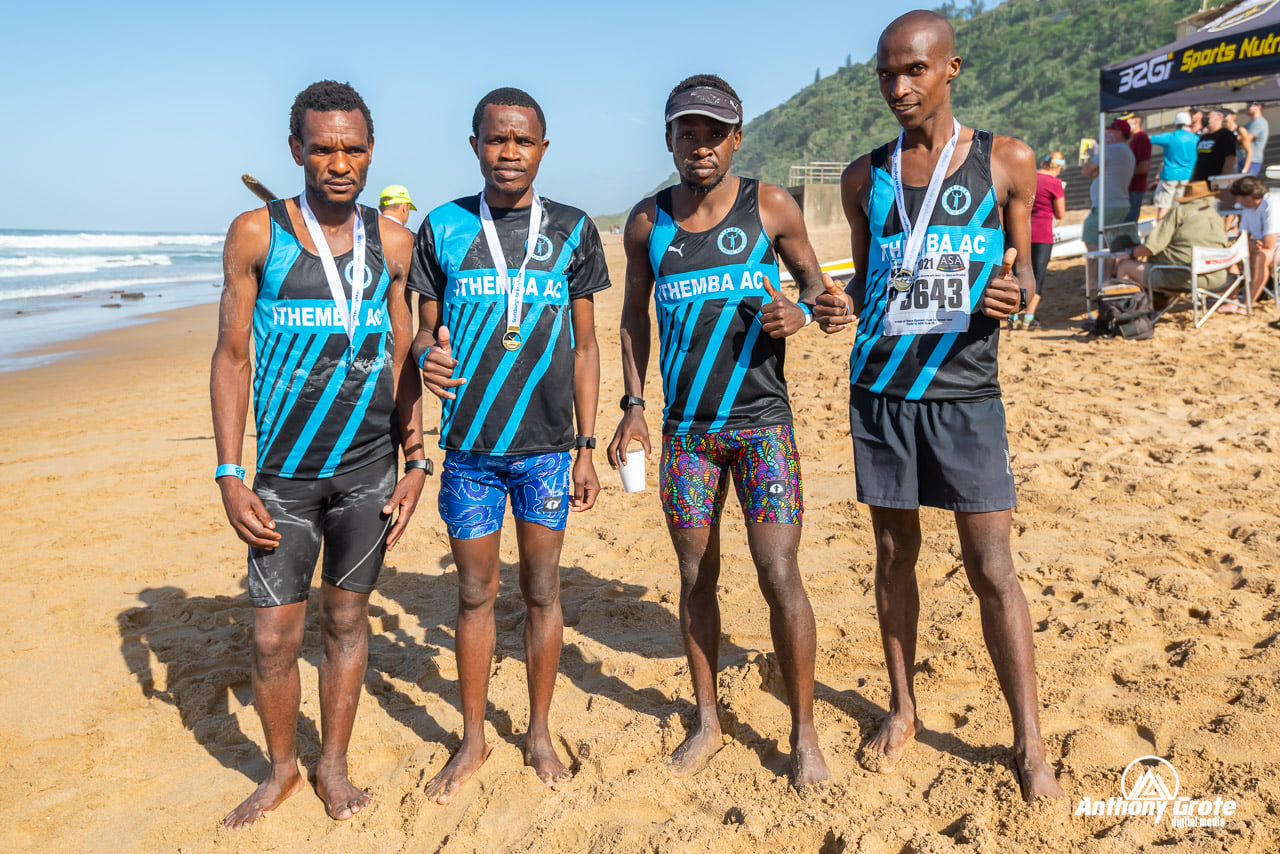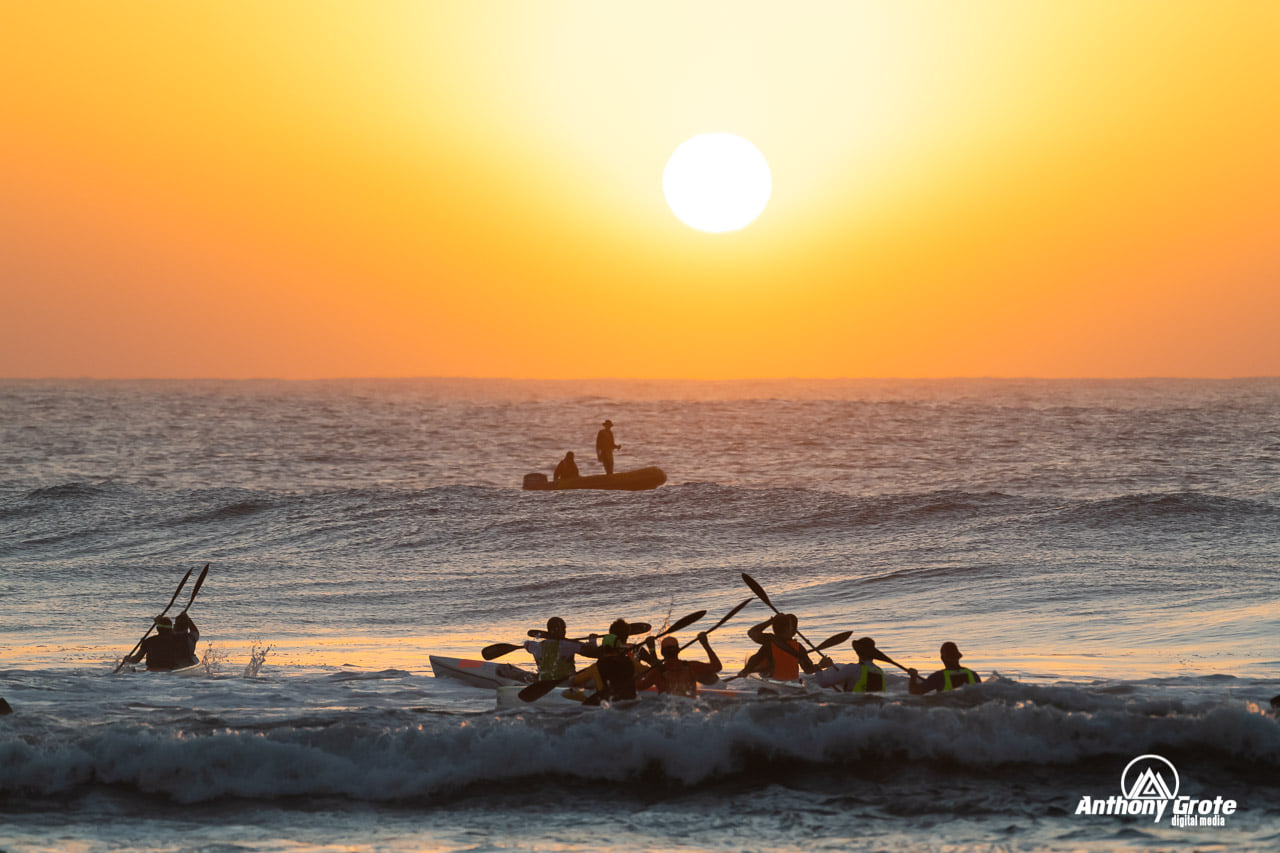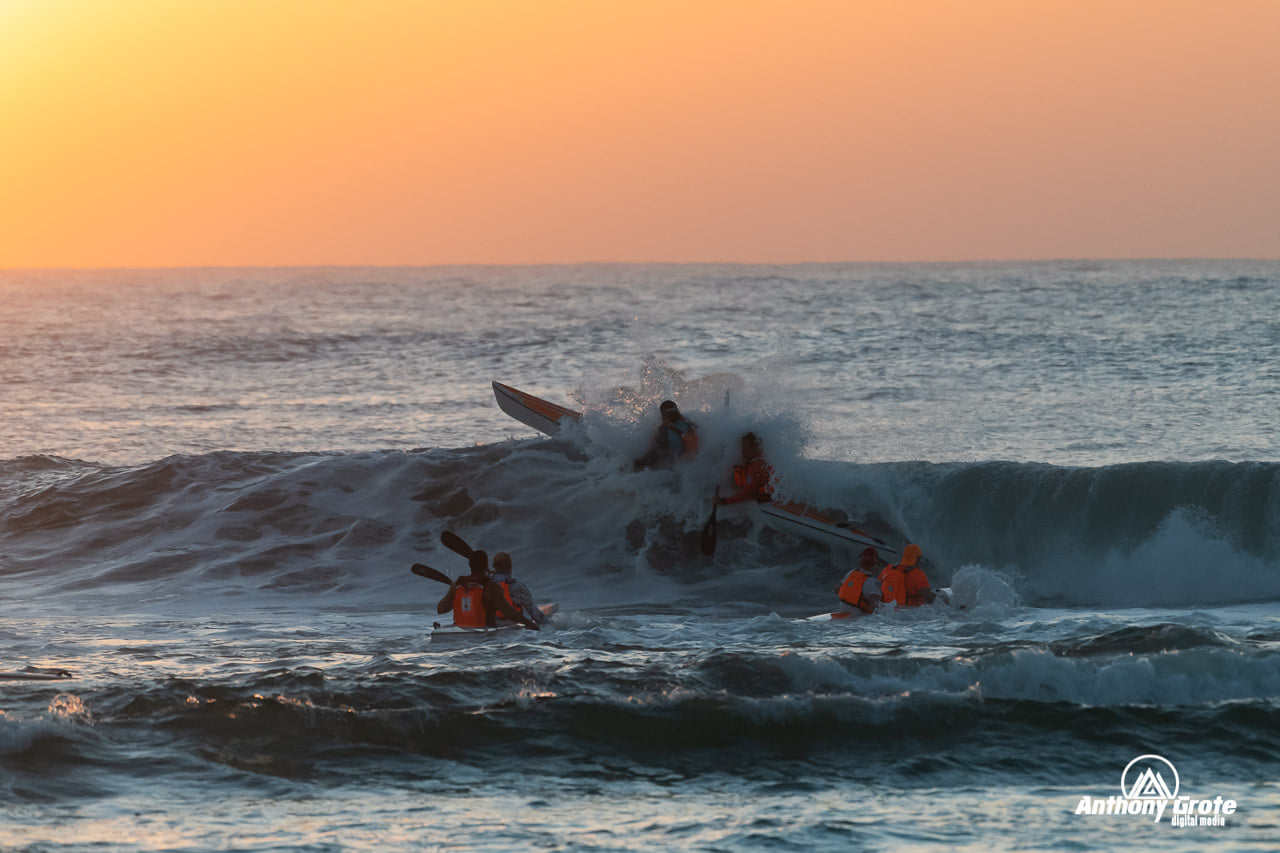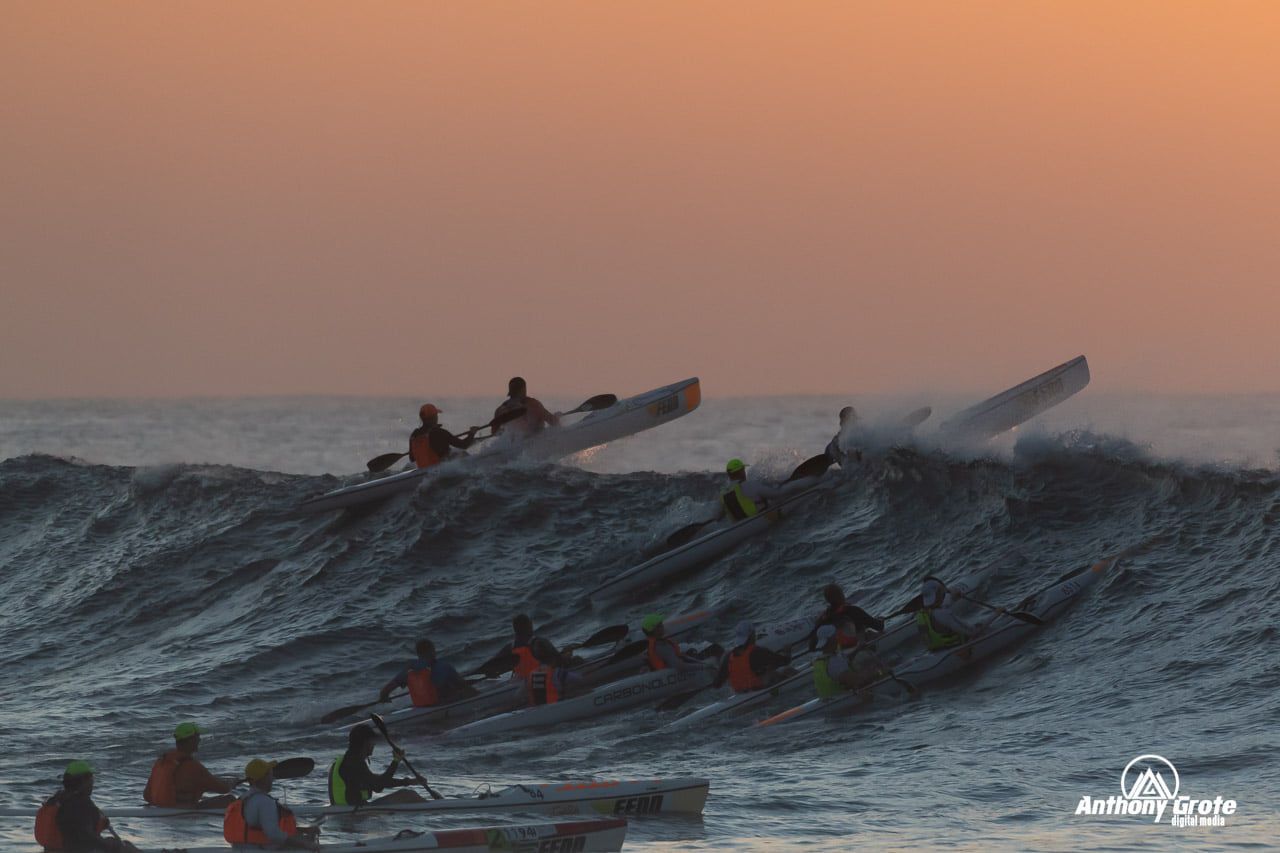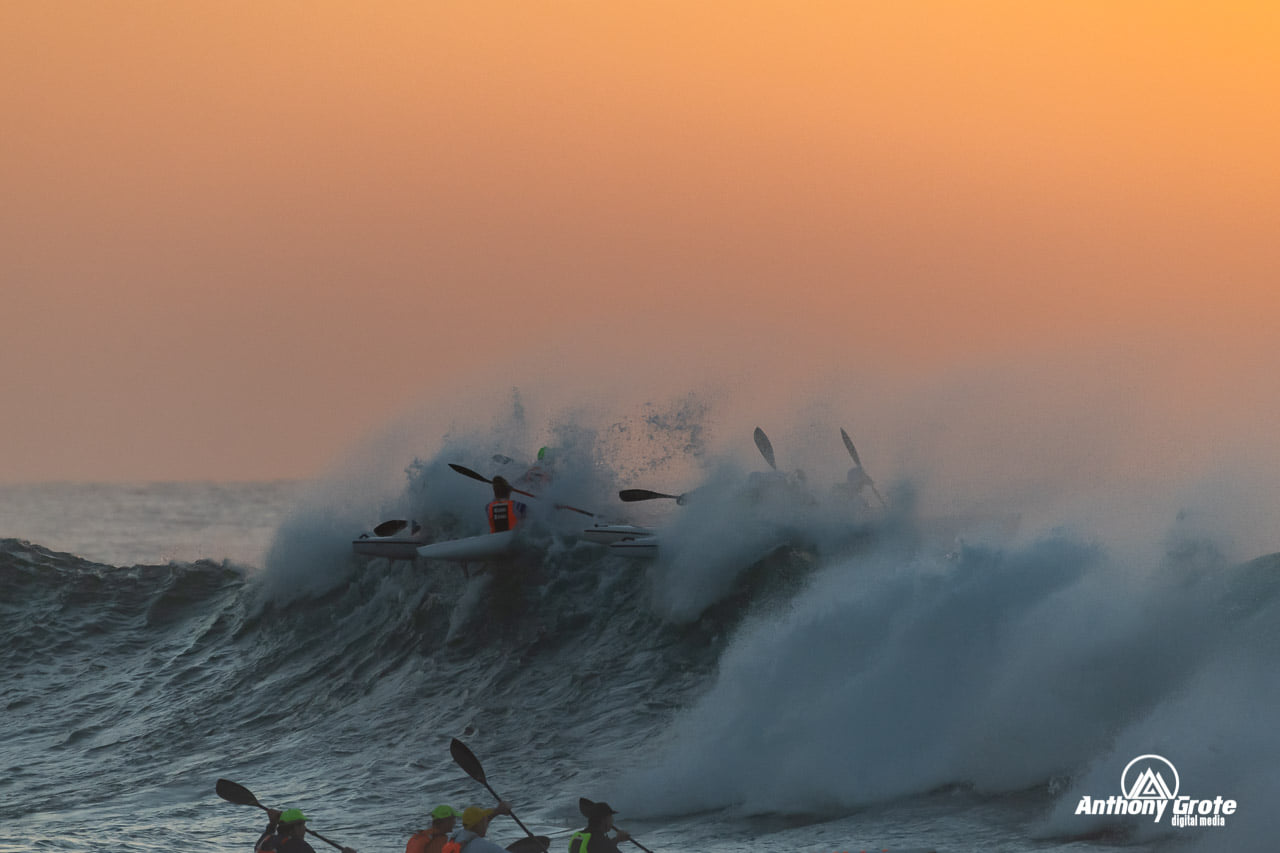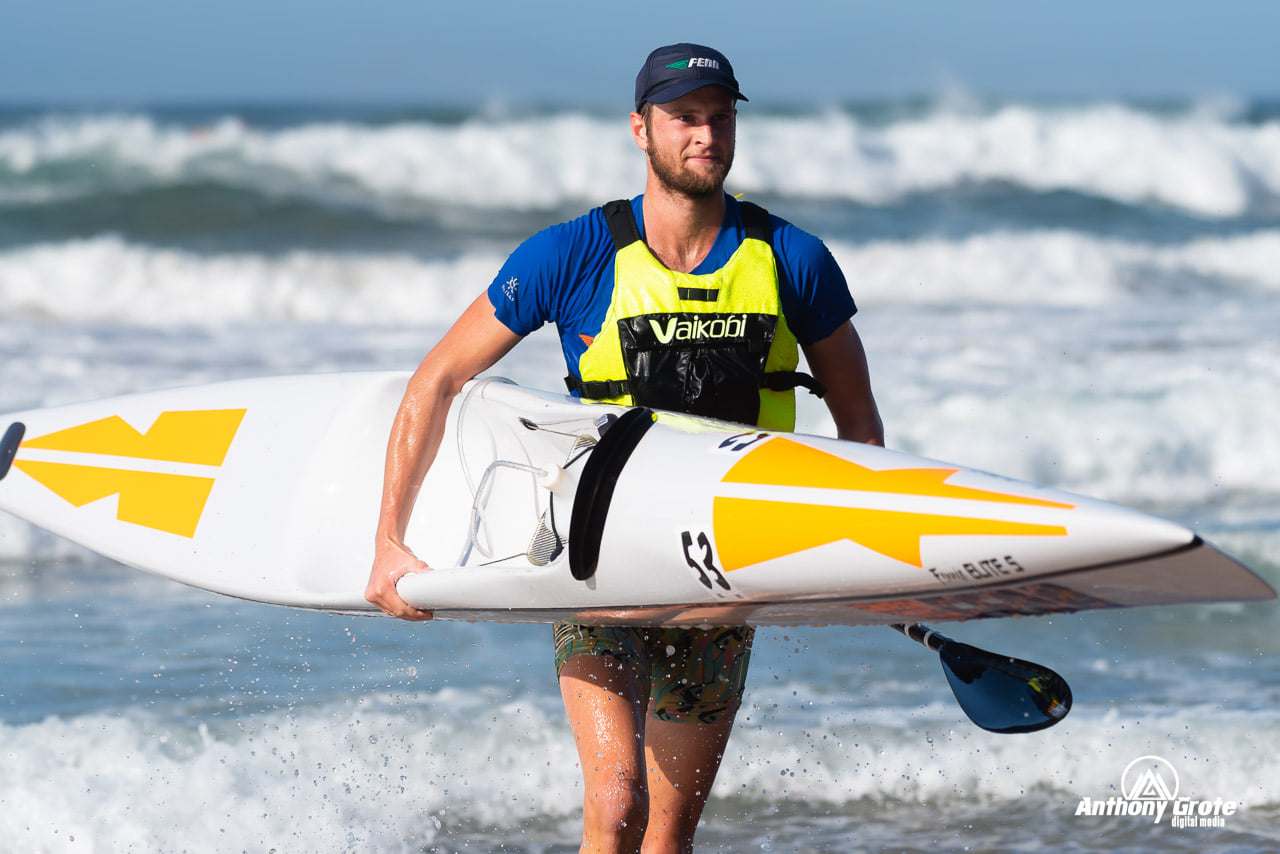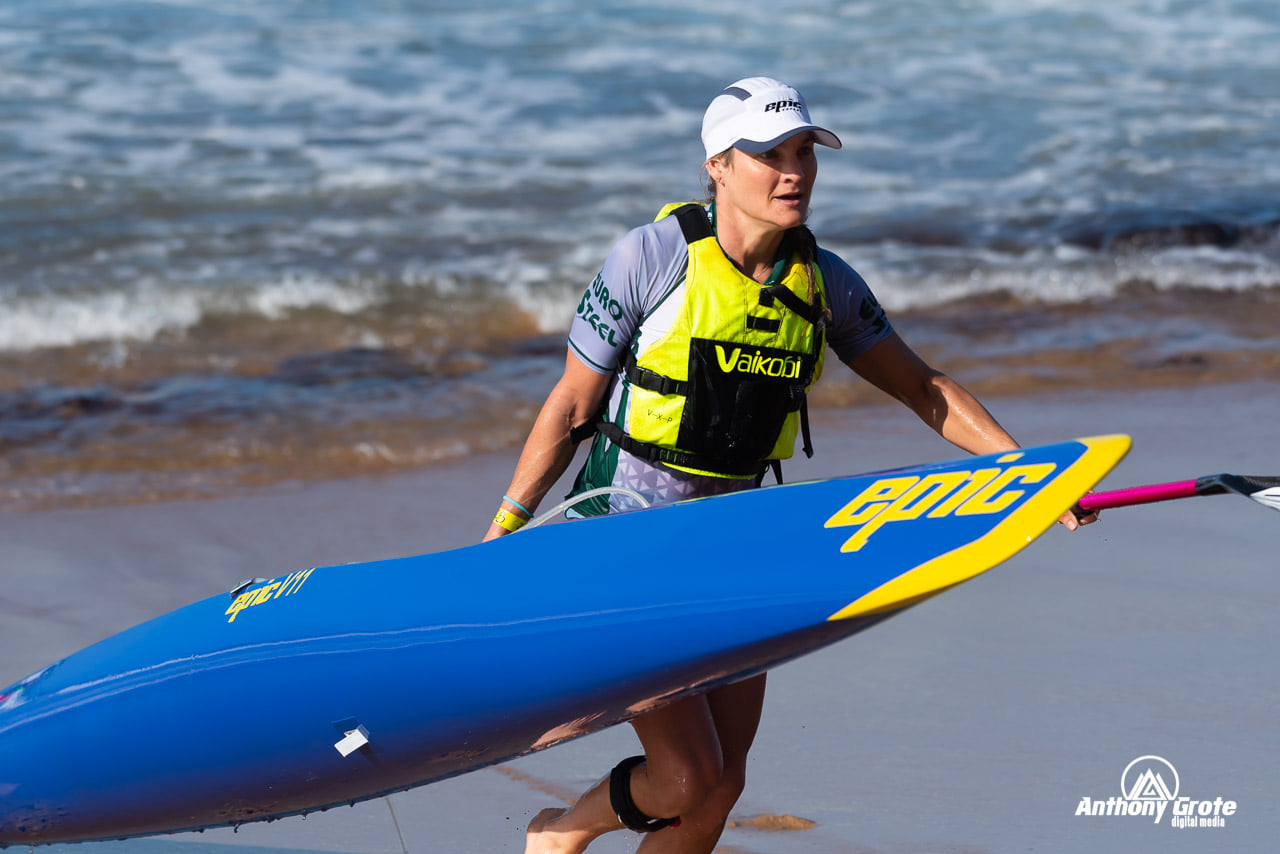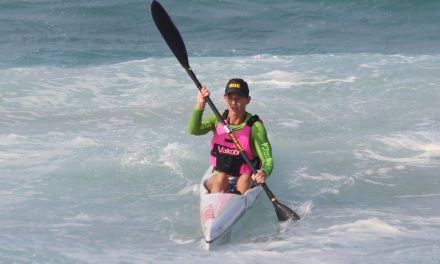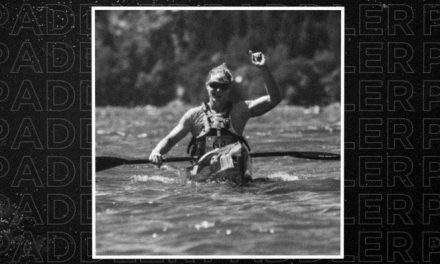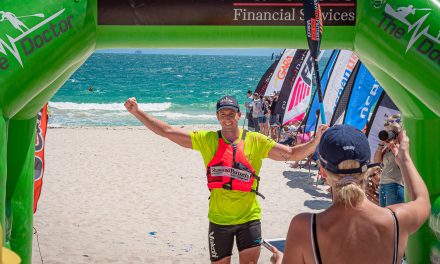SCOTTBURGH TO BRIGHTON TARGETS REBUILD AFTER REVITALISED 2021
After 46 kilometres of flat-out racing, no one predicted the 2016 Scottburgh to Brighton would finish like this.
On one double ski Matt Bouman and Wade Kriegar. On the other Luke Nisbet and Gene Prato.
Racing toe-to-toe, first in the water – then unexpectedly on the sand, sprinting toward the finish, before diving across the line.
It was a tie.
It’s a remarkable chapter in an event that boasts an even more remarkable history.
That battle for bragging rights perfectly encapsulates the Scottburgh to Brighton.
Back in 1958, surf lifesavers from Natal on South Africa’s east coast challenged each other to a surfski race from Pirates Surf Lifesaving Club on Durban’s Battery Beach to Umhlanga, some 13 kilometres north, and back.
This event – dubbed the Pirates-Umhlanga-Pirates – is widely considered to be the oldest timed surfski race in the world.
But it didn’t settle their ledger.
A few weeks later, another challenge was thrown out – this time, to paddle from Scottburgh to Brighton.
And the grueling challenge was born.
In a sport that boasts an ever-growing number of races, this one is unique.
In those early days, it was strictly a challenge for lifesavers, who’d go to extreme lengths just to take part.
“It was tough enough on a handcrafted ski, probably built by the paddler themselves and not nearly as efficient as todays craft.” Stan Whiting, a long-time member of the Amanzimtoti Surf Lifesaving Club explains.
“But in those days, some hardened lifesavers even completed the race on the more traditional longboards.”
Surfski paddlers, board paddlers… and even runners.
In 1976, another layer was added to the event.
“Much like how the ski race was started, a challenge between runners and paddlers was thrown down to see who was quicker.” Whiting says.
“The individual marathon runner, or the accomplished lifesaving ski paddler?
“These challenges were just for bragging rights and a medal… there were no cash prizes back then.”
The event’s history has always centred around the water, though.
And for good reason.
The distance itself is an obvious challenge, but the beaches that host the start, mid-race check-in and finish are all renowned for their boat-breaking power.
“The pirates members wanted to paddle from Scottburgh to Durban, just to see if they could do it,” Legendary race organizer, and one of the world’s most enthusiastic paddlers, Billy Harker explains.
“They were unsure if it was even possible at that stage, so it really was a challenge.”
The start takes place at Scottburgh main beach, a picturesque location with a small beach tucked behind a right-hand point break.
The rocky point, peppered with fishermen taking advantage of the iconic annual sardine run before sunrise, offers the patient paddler the opportunity to get out unscathed.
Mistime the waves, however, and you will pay the price.
It’s a time-honoured lesson that was again made clear in 2021.
Double ski competitors, prepared for a long day on the water, were forced to scramble off the start to make it over a set.
A few boats scratched their way to safety, leaving the rest spread out by the rolling waves.
A less than ideal start.
Paddling on the southern coastline of Kwa-Zulu Natal is a special experience.
Once you have left the start at Scottburgh, you head north for some 28km to the check-in at Amamzimtoti.
To your right you have the sunrise, to your left some of the most pristine coastline in the world.
You will paddle past the back of some incredible surf breaks and river mouths, like the Umkomaas – the thundering waves a thrilling reminder of what surfski paddling has to offer.
The race usually takes place in the middle of the year, which in this part of the world is Sardine Run time.
The sardine run of southern Africa occurs from May through July when billions of sardines spawn in the cool waters of the Agulhas Bank and move northward along the east coast of South Africa.
Their sheer numbers create a feeding frenzy along the coastline.
The run, containing millions of individual sardines, occurs when a current of cold water heads north from the Agulhas Bank up to Mozambique, where it then leaves the coastline moving further east into the Indian Ocean.
Somewhat unassuming underwater, researchers estimate the sardine run could actually rival East Africa’s great wildebeest migration.
The shoals are often more than 7 kilometres long, 1.5 kilometres wide and 30 metres deep and are clearly visible from spotter planes or from the surface.
It means that wildlife spotting is a near-certainty for Scottburgh to Brighton paddlers.
From flying fish to small pods of dolphins… even the occasional shark.
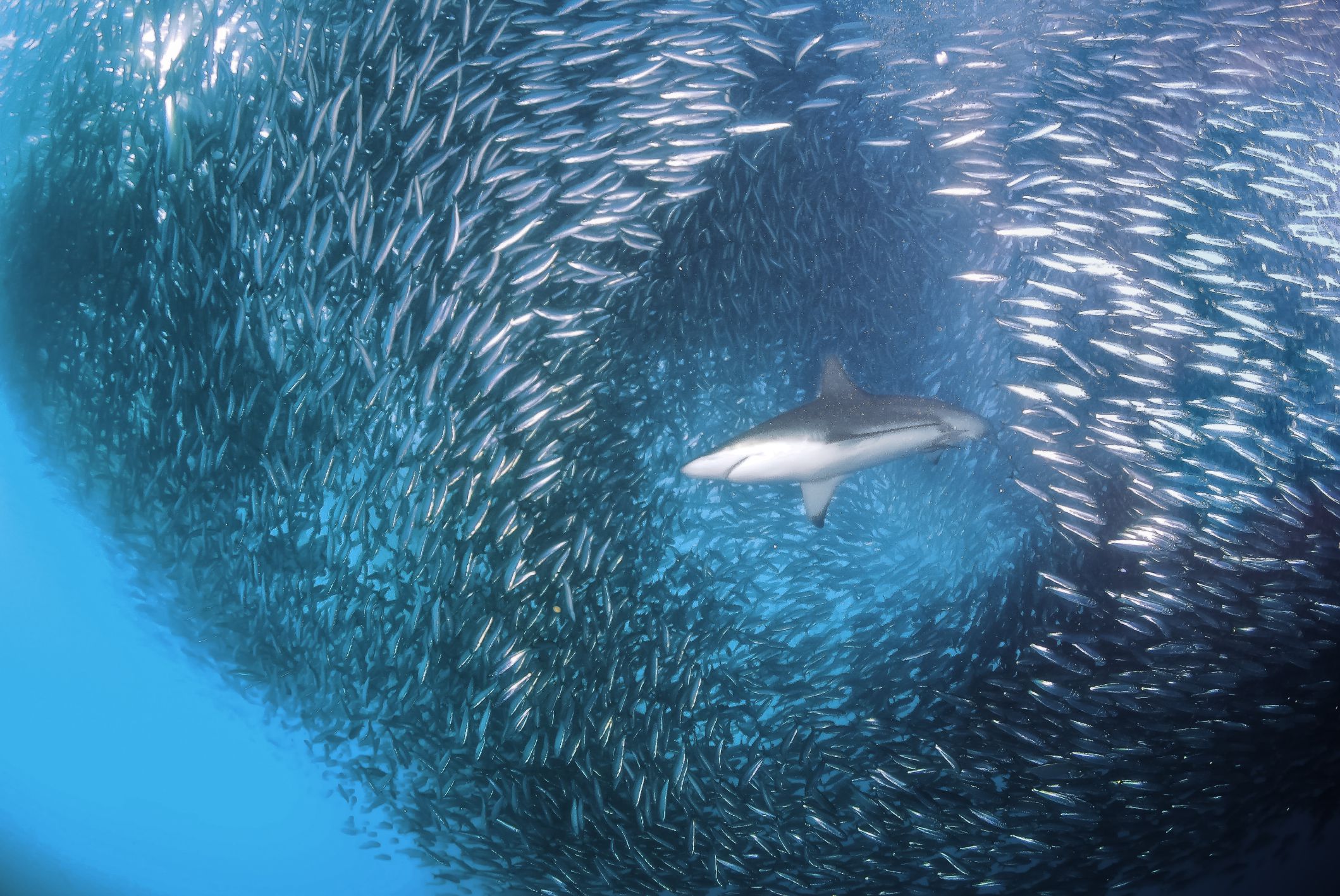
The check-in point at Amamzimtoti, some 28 kilometres in, represents the end of the first chapter of the race.
Historically, it was used as a safety stop – something that often isn’t considered necessary in today’s races.
In the early years of the event, paddlers had to “clock-in” and wait a compulsory 10 minutes before being allowed to resume northward.
This safety check also served as an opportunity to refuel and rehydrate.
Today, participants trot around a flag up the beach to have their number checked before heading back out to sea.
Like those paddlers that came before then, today’s competitors will often indulge in a leg-stretch and consume whatever “fuel” may be on offer.
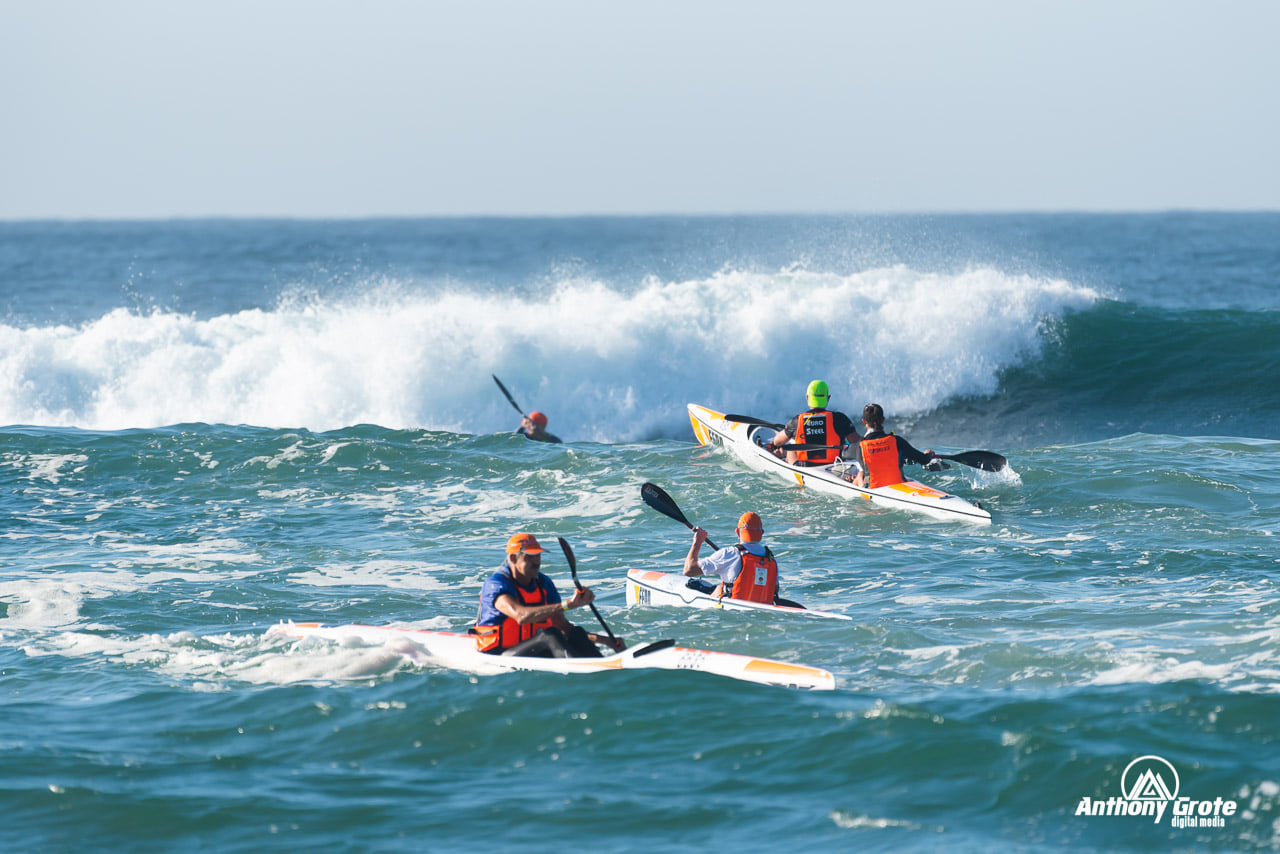
Whiting has a long association with the Scottburgh to Brighton and explains that the check-in is far more than a mere formality.
“The distance of 46.5km is a significant factor that challenges you as a competitor, whether you are well trained or not, and the added anxiety of going in and out of the surf at Amamzimtoti will always keep you guessing,” he says.
“The check-point provides for some spectacular wipe-outs, near misses and all too often heartache for those who get demolished whilst trying to get back out after check in.”
The distance is one thing.
The surf is another.
But just when paddlers enter the final stretch of the race, another factor tends to come into play.
The Cutting Monster.
While no-one can accurately explain its origins – nor justify its methods – just off the back of Cuttings Beach where the Mlazi river meets the ocean some five kilometres from the finish, The Cutting Monster has claimed many a paddler.
Ask anyone who has taken part in the Scottburgh to Brighton what to look out for on this race – most will acknowledge the risks of the waves and headwind, all will warn you of The Cutting Monster.
Perhaps it is a change in currents, an increase in headwind or just simply 40-odd kilometres of paddling taking its toll… you won’t have to look too far to find a finisher who will tell you that the wheels just fell off.
All of these challenges – and all of the folklore they create – mean that the Scottburgh to Brighton has a devoted, passionate group of followers.
But now, it’s once again attracting new ones.
From its humble beginnings as a lifesaving challenge, 2021 saw more than 175 paddlers take part.
“Today was my first one, so I can tick that one off the bucket list,” 2021 men’s single ski winner Josh Fenn said. “I’ll probably be back next year.”
“I love this race and the whole vibe,” Nicole Birkett, the 2021 women’s champions said. “It’s a good one.”
After plenty of quiet years, organisers are determined to take this opportunity and continue to rebuild the prestige around the race.
Billy Harker has been a driving force behind that, aware the challenge of the race is one of its biggest drawcards.
“It doesn’t matter whether it’s downwind, headwind or no wind, 46 kilometres on the south coast is a real challenge and you cannot hide,” he says.
“You do not want to turn up under-prepared… if you do, you will be properly found out.
“In fact, you may have to pull out and pulling out is not something that surfski paddlers like to do”.
A race started as a challenge between mates, the magic of the Scottburgh to Brighton lies in the way it tests paddlers against mother nature.
It’s created a storied history that lures competitors back year-after-year.
And it’s likely to do so for many years to come, buoyed by this new wave of popularity.
“Fortunately, a few individuals keep the event going and over the years,
“While having its ups-and-downs, it has survived” Whiting says.
